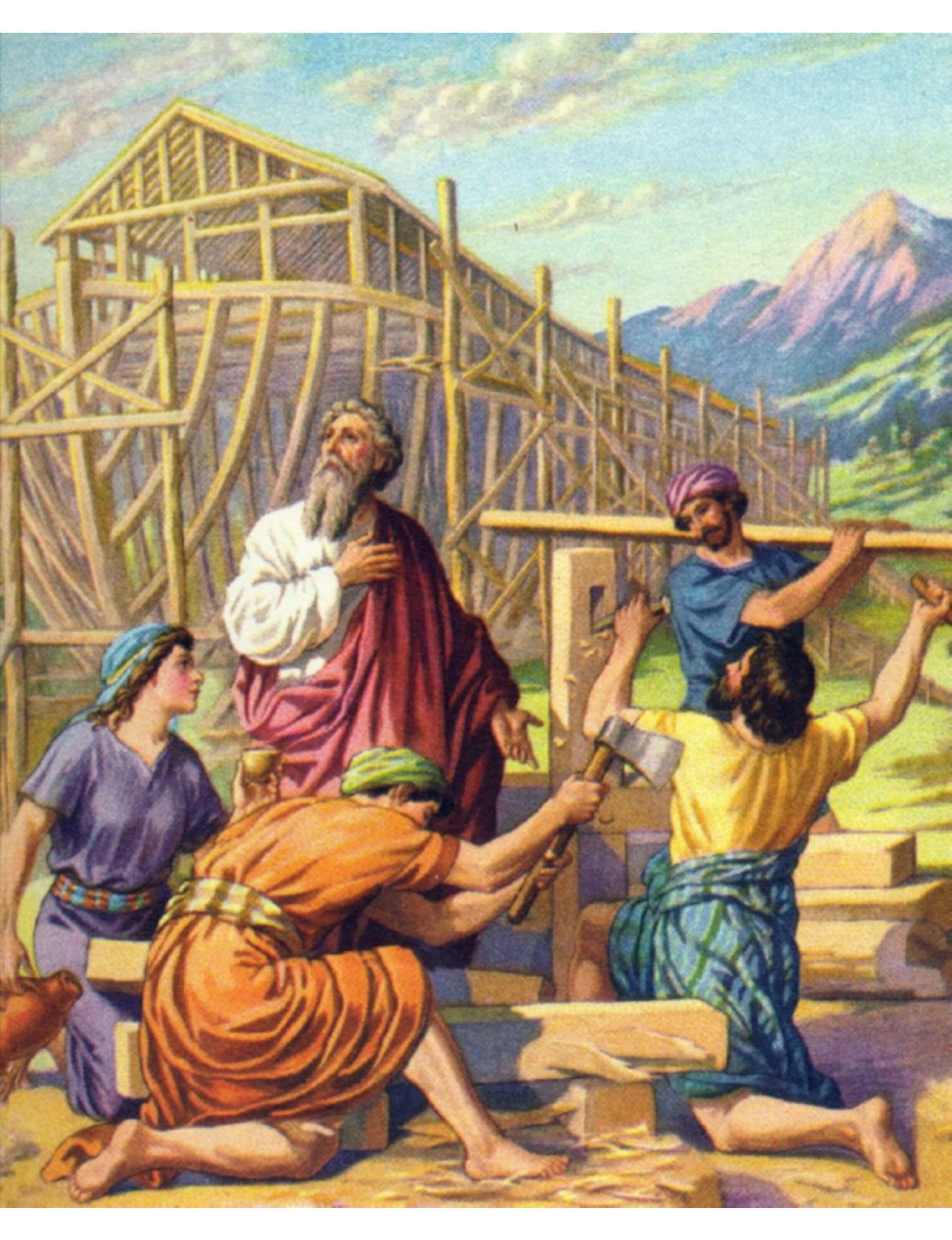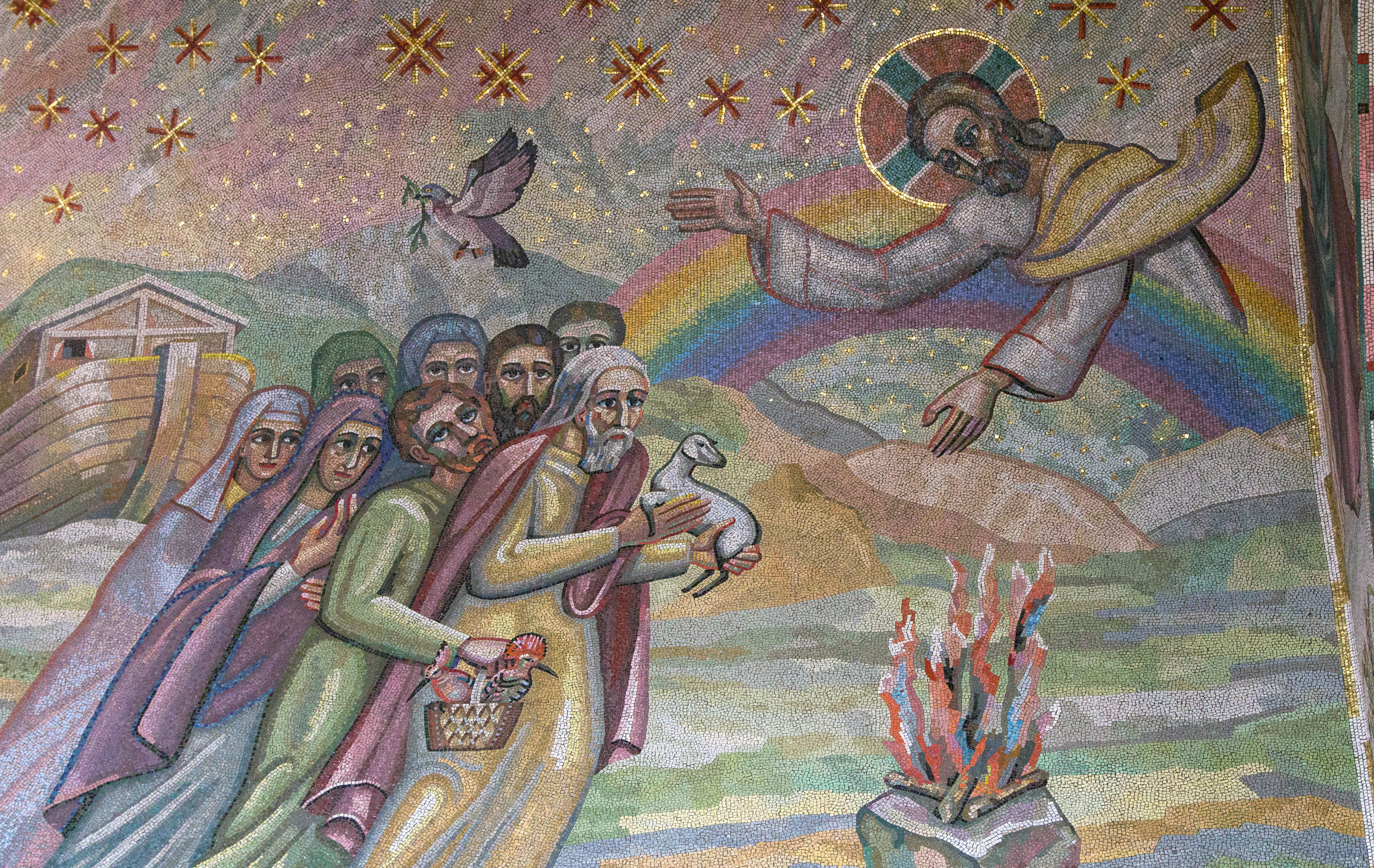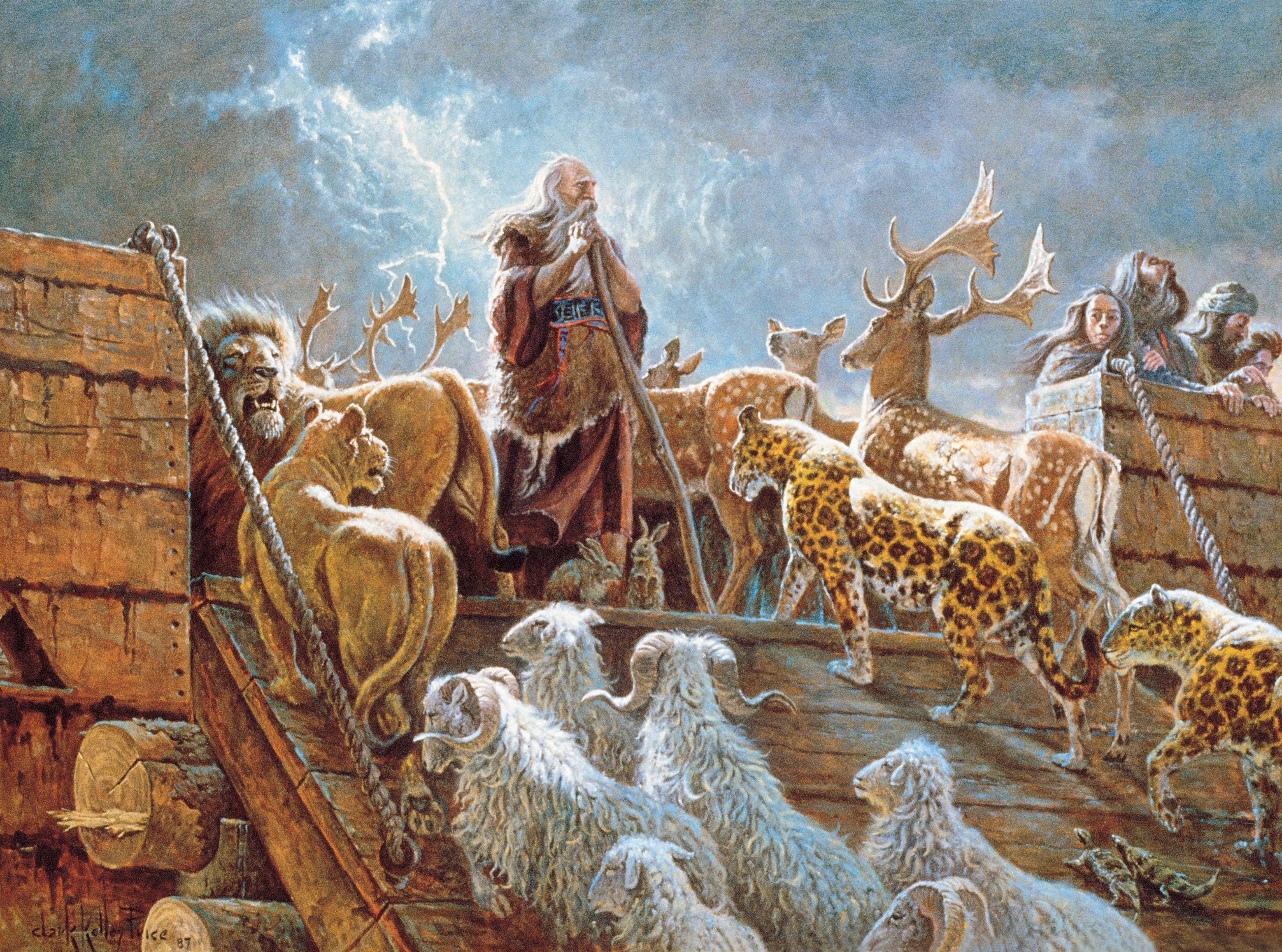The Noah Boat Age: Decoding The Ark's Ancient Timeline
Table of Contents
- Noah: A Righteous Figure Amidst a Sinful World
- Biographical Insights into Noah
- The Divine Command and the 120-Year Warning
- Calculating the Noah Boat Age: Noah's Age at the Flood's Onset
- The Duration of the Flood and Life Aboard the Ark
- The Covenant and the Symbolism of Renewal
- Lessons from the Noah Boat Age: Obedience and Faith
- Addressing Common Questions About the Noah Boat Age
Noah: A Righteous Figure Amidst a Sinful World
To truly grasp the significance of the "Noah boat age," we must first understand the man himself. Noah was an obedient servant of God in the Old Testament who found favor with God amidst a sinful world. He appears at a pivotal point in the biblical narrative, bridging a lineage from Adam through Seth. The Bible describes Noah as a righteous man, the only blameless person living on earth at the time, and he walked in close fellowship with God. This exceptional character is crucial because it explains why he was chosen for such a monumental task. In a world consumed by wickedness, where human evil was rampant, Noah stood out. He was part of the godly line of Seth, of whom it was said, “at that time men began to call upon the name of the Lord” (Genesis 4:26). This distinction highlights a lineage of faith that persisted even as society spiraled into depravity. Noah's unique righteousness positioned him as the sole individual through whom God would preserve humanity and the animal kingdom, initiating a new chapter for creation. His story is contained in the Hebrew Bible, in the book of Genesis, serving as a testament to the power of unwavering faith and obedience in the face of widespread corruption. This article explores Noah's role as a righteous figure, his divine selection, and the symbolism of the rainbow covenant.Biographical Insights into Noah
Noah, whose name means 'rest' or 'consolation' (also Noach), appears as the last of the antediluvian patriarchs in the traditions of Abrahamic religions. He was the firstborn son of Lamech, representing the tenth generation of man on the earth, and came into the world when his father was 182 years old. This detail from Genesis 5:28-29 provides an initial anchor for calculating the "Noah boat age" and understanding the context of his birth within the long lifespans of the pre-Flood era. Noah was the father of three sons: Shem, Ham, and Japheth. These three sons, along with their wives and Noah's wife, formed the eight individuals who would survive the global deluge. Beyond his role as the hero of the biblical flood story in the Old Testament book of Genesis, Noah is also known as the originator of vineyard cultivation. As the father of Shem, Ham, and Japheth, he became the representative head of post-flood humanity, from whom all nations would descend. His life, marked by profound faith and a unique divine calling, sets the stage for the dramatic events of the Flood.| Attribute | Detail |
|---|---|
| Name | Noah (Noach) |
| Meaning of Name | 'Rest' or 'Consolation' |
| Father | Lamech |
| Mother | Unspecified in Genesis account |
| Sons | Shem, Ham, Japheth |
| Lineage | Tenth and last of the antediluvian patriarchs, from the godly line of Seth, bridging lineage from Adam. |
| Key Roles | Hero of the biblical flood story, originator of vineyard cultivation, representative head of humanity post-flood. |
| Character Traits | Righteous, blameless, obedient servant of God, walked in close fellowship with God, found favor with God amidst a sinful world. |
| Total Lifespan | 950 years (Genesis 9:29) |
The Divine Command and the 120-Year Warning
The narrative progresses from Noah's character to God's decisive action. God commanded Noah to build an ark and gave humans 120 years to repent before the floodwaters would come (Genesis 6:3). This period represents a significant aspect of the "Noah boat age" timeline, indicating God's immense patience and a final opportunity for humanity to turn from its wicked ways. It wasn't an immediate judgment; rather, it was a long grace period, a testament to divine mercy preceding righteous wrath. During these 120 years, Noah, an obedient servant of God amidst a sinful world, would have been engaged in the monumental task of constructing the ark. This public display of faith, building a massive vessel on dry land, served as a living sermon, a visible warning to a society that had completely disregarded God. God’s warnings, however, went entirely ignored. The people continued in their sin, mocking Noah's efforts and dismissing the impending doom. This highlights a crucial theme: God's righteous judgment on persistent evil. Despite the clear warning and the visible preparation for over a century, humanity chose to remain steeped in its depravity, ultimately sealing its own fate. The 120-year warning underscores the depth of God's patience, even in the face of profound human rebellion.Calculating the Noah Boat Age: Noah's Age at the Flood's Onset
One of the most direct answers to the "Noah boat age" question lies in Genesis 7:6, which explicitly states, "Noah was six hundred years old when the floodwaters came on the earth." This age marks a critical point in the biblical timeline. It means that Noah, who was born when his father Lamech was 182, had lived for six centuries before the catastrophic event that would reshape the world. This longevity is characteristic of the antediluvian patriarchs, whose lifespans often stretched for many hundreds of years, far exceeding modern human lifespans. Given the 120-year warning period, Noah would have been 480 years old when God first issued the command to build the ark (600 - 120 = 480). This implies that Noah embarked on the construction of the ark for over a century, a staggering period of sustained effort and unwavering faith. The sheer scale of this commitment, building a vessel of immense proportions over such a long time, further emphasizes Noah's unique obedience and trust in God's word. The "Noah boat age" at the commencement of the flood, 600 years, therefore, is not just a number; it represents the culmination of a lifetime of walking in close fellowship with God, preparing for a divine intervention that would reset the course of humanity.The Ark's Construction Period and Noah's Diligence
While the Bible does not specify the exact duration of the ark's construction, the 120-year warning period (Genesis 6:3) strongly implies that Noah spent a significant portion of this time building the massive vessel. If Noah was 600 years old when the flood began and the warning was given 120 years prior, he would have been 480 years old when he received the divine blueprint and commenced work. This means that for over a century, Noah, his sons, and potentially hired laborers, toiled on the ark. This prolonged construction period underscores Noah's extraordinary diligence and unwavering faith. Imagine the ridicule and skepticism he must have faced from a world that saw no sign of an impending flood, especially while he was building a colossal boat on dry land. Yet, Noah remained steadfast, an obedient servant of God amidst a sinful world. His actions served as a constant, tangible warning, a testament to his belief in God's word, even when it seemed illogical to the eyes of his contemporaries. The ark itself, built over decades, if not a full century, became a symbol of Noah's unshakeable commitment and a physical manifestation of God's grace and impending judgment.The Duration of the Flood and Life Aboard the Ark
Once the waters came, Noah and his family, along with the animals, were safely inside the ark. The biblical account provides a detailed timeline of the flood's duration, which further defines the "Noah boat age" in terms of his experience within the vessel. * **Entry and Initial Flood:** Noah, his family, and the animals entered the ark when Noah was 600 years old, on the seventeenth day of the second month (Genesis 7:11). The rain then fell for 40 days and 40 nights. * **Waters Prevailing:** The waters prevailed on the earth for 150 days (Genesis 7:24). During this time, all high mountains under the entire heavens were covered. * **Waters Receding:** After 150 days, God remembered Noah, and the waters began to recede. On the seventeenth day of the seventh month, the ark came to rest on the mountains of Ararat (Genesis 8:4). * **Mountain Tops Visible:** The waters continued to recede until the first day of the tenth month, when the tops of the mountains became visible (Genesis 8:5). * **Sending Out Birds:** After 40 more days, Noah sent out a raven, then a dove multiple times, to check if the waters had subsided (Genesis 8:6-12). * **Earth Dry:** On the first day of the first month of Noah's 601st year, the water had dried up from the earth (Genesis 8:13). * **Exit from the Ark:** Finally, on the twenty-seventh day of the second month of Noah's 601st year, Noah, his family, and all the animals exited the ark (Genesis 8:14-19). By calculating these periods, Noah and his family spent approximately one year and ten days inside the ark (from the 17th day of the 2nd month of his 600th year to the 27th day of the 2nd month of his 601st year). This period of confinement, sustenance, and patient waiting is a crucial part of the "Noah boat age" experience, highlighting the endurance and faith required to survive such an unprecedented global catastrophe.The Covenant and the Symbolism of Renewal
Upon exiting the ark, Noah's first act was to build an altar and offer sacrifices to God. In response, God established a covenant with Noah and all living creatures, promising never again to destroy all life on earth by a flood. This covenant, a profound expression of God's grace extended through covenant, is symbolized by the rainbow. "This article explores Noah's role as a righteous figure, his divine selection, and the symbolism of the rainbow covenant." The rainbow serves as a perpetual reminder of God's promise, a visible sign of hope and renewal after judgment. Discover the biblical meaning of Noah, delving into themes of hope, renewal, and unwavering faith. The story transitions from divine judgment to divine grace, emphasizing God's faithfulness even when humanity fails. Uncover how Noah's legacy shapes modern beliefs, as the rainbow covenant continues to symbolize God's enduring promise and the potential for new beginnings after periods of trial and tribulation. This act of covenant-making solidifies Noah's central role not just as a survivor, but as the patriarch through whom God initiated a new relationship with humanity.Lessons from the Noah Boat Age: Obedience and Faith
The story of Noah and the flood in the Bible teaches profound lessons about obedience and setting a godly example in the midst of a godless society. Noah, a central figure in the Bible, particularly known for his role in the flood narrative in the book of Genesis, is described as a righteous man chosen by God. His life serves as a powerful illustration of what it means to walk in close fellowship with God, even when the path is difficult and the world is hostile. Noah’s story embodies key messages of scripture: God’s righteous judgment on persistent evil, his grace extended through covenant, and the call of faith and obedience upon the faithful. The "Noah boat age" isn't just about a chronological timeline; it's about the timeless principles demonstrated through Noah's actions. His willingness to obey God's seemingly impossible command, to build an ark for over a century, despite societal ridicule, speaks volumes about his unwavering faith. This narrative encourages believers to trust in God's plan, even when it defies human logic, and to live righteously in a world that often rejects divine truth. It is a timeless reminder that faith, coupled with obedience, can lead to salvation and a new beginning.The Significance of Noah's Longevity
Noah lived for 950 years (Genesis 9:29), making him one of the longest-lived figures in the Bible, though not the longest (Methuselah lived 969 years). His extended lifespan, a common characteristic of the antediluvian patriarchs, plays a significant role in the biblical narrative. It allowed for a long period of human proliferation before the flood, and then a long period of repopulation after it. From a theological perspective, these immense lifespans are often seen as a reflection of humanity's closer proximity to creation and a different pre-Flood environment. They also emphasize the profound patience of God, who allowed centuries for humanity to repent before bringing judgment. Noah's age, particularly his "Noah boat age" at the time of the flood (600 years old), highlights the incredible endurance and steadfastness required for his divine mission. His longevity allowed him to witness the full cycle of humanity's descent into sin, God's judgment, and the subsequent renewal, making him a unique bridge between two distinct eras of human history.Addressing Common Questions About the Noah Boat Age
The concept of "Noah boat age" often raises several questions, particularly concerning the extraordinary lifespans and the accuracy of the biblical timeline. It's important to approach these questions from the perspective of the biblical text itself, which serves as the primary source for Noah's story. One common query revolves around the feasibility of such long lifespans. From a biblical literalist perspective, these ages are accepted as factual, reflecting a pre-Flood world that operated under different conditions, perhaps with a different atmosphere or environment that contributed to greater longevity. The Bible presents these ages as straightforward historical facts within its narrative framework. Another question often arises about the precision of the timeline. The Book of Genesis provides remarkably specific dates and durations for the flood event – from the day the rain started to the day Noah exited the ark. These details suggest a meticulous record-keeping within the ancient tradition from which Genesis was compiled, reinforcing the idea that the "Noah boat age" and the flood timeline are presented as historically significant. Ultimately, the focus of the "Noah boat age" is less about scientific validation and more about the theological and moral lessons embedded within the narrative. It emphasizes God's sovereign control over creation, His patience, His righteous judgment, and His covenant faithfulness. The specific ages and durations serve to underscore the epic scale of the events and the profound obedience of Noah, making the story not just a historical account but a powerful testament to faith.Noah's Legacy: Shaping Modern Beliefs
Noah's legacy extends far beyond a historical account; it profoundly shapes modern beliefs across various cultures and religions. The story of the flood, with Noah at its center, serves as a universal narrative about divine justice, human accountability, and the promise of new beginnings. It reinforces the concept of a moral universe where actions have consequences and where a loving, yet just, God intervenes in human affairs. For many, the "Noah boat age" and the events surrounding it continue to inspire unwavering faith and a commitment to obedience. It teaches that even when one stands alone against a corrupt world, righteousness and trust in God will lead to salvation. The rainbow covenant remains a powerful symbol of hope, a reminder of God's enduring promises and His grace extended through covenant. This narrative encourages believers to reflect on their own lives, to seek close fellowship with God, and to strive for righteousness in a world that often mirrors the one Noah inhabited. Noah's story is not just an ancient tale; it is a living testament to the power of faith and the transformative potential of divine grace, continuing to influence spiritual understanding and moral frameworks today.Conclusion
The "Noah boat age" is far more than a simple chronological detail; it is a profound marker within a narrative that encapsulates humanity's relationship with the divine. From Noah's birth when his father was 182, to his pivotal age of 600 when the flood began, and the approximate year and ten days spent aboard the ark, every detail underscores the extraordinary nature of his obedience and the immense scale of God's plan. Noah, an obedient servant of God amidst a sinful world, truly found favor with God, embodying righteousness and walking in close fellowship with Him. His story, contained in the Hebrew Bible, in the book of Genesis, reveals God's righteous judgment on persistent evil, His grace extended through covenant, and the call of faith and obedience upon the faithful. The 120-year warning, God's patience, and the subsequent covenant of the rainbow all contribute to a rich tapestry of lessons about hope, renewal, and unwavering faith. As the father of Shem, Ham, and Japheth, Noah became the representative head of humanity, ensuring the continuation of life after the deluge. The enduring legacy of Noah's story continues to shape modern beliefs, reminding us of the importance of listening to divine warnings, living a life of integrity, and trusting in God's promises even when the world around us seems to disregard them. It is a powerful testament to the fact that one righteous individual, empowered by divine selection, can play a pivotal role in the unfolding of history. We hope this deep dive into the "Noah boat age" has provided you with a clearer understanding of this foundational biblical narrative. What aspects of Noah's story resonate most with you? Share your thoughts in the comments below, and consider exploring other biblical timelines and their profound implications for faith and life.- Daniel Yocum Art
- Pizza Parlor Lunch Specials
- Estates At Saucon Valley
- Luxury Beach Club Islas Del Rosario
- Naod Welday Utah

Noah From The Bible And His Family

Noah - World History Encyclopedia

Noah's ark latest photos - wordsgeser